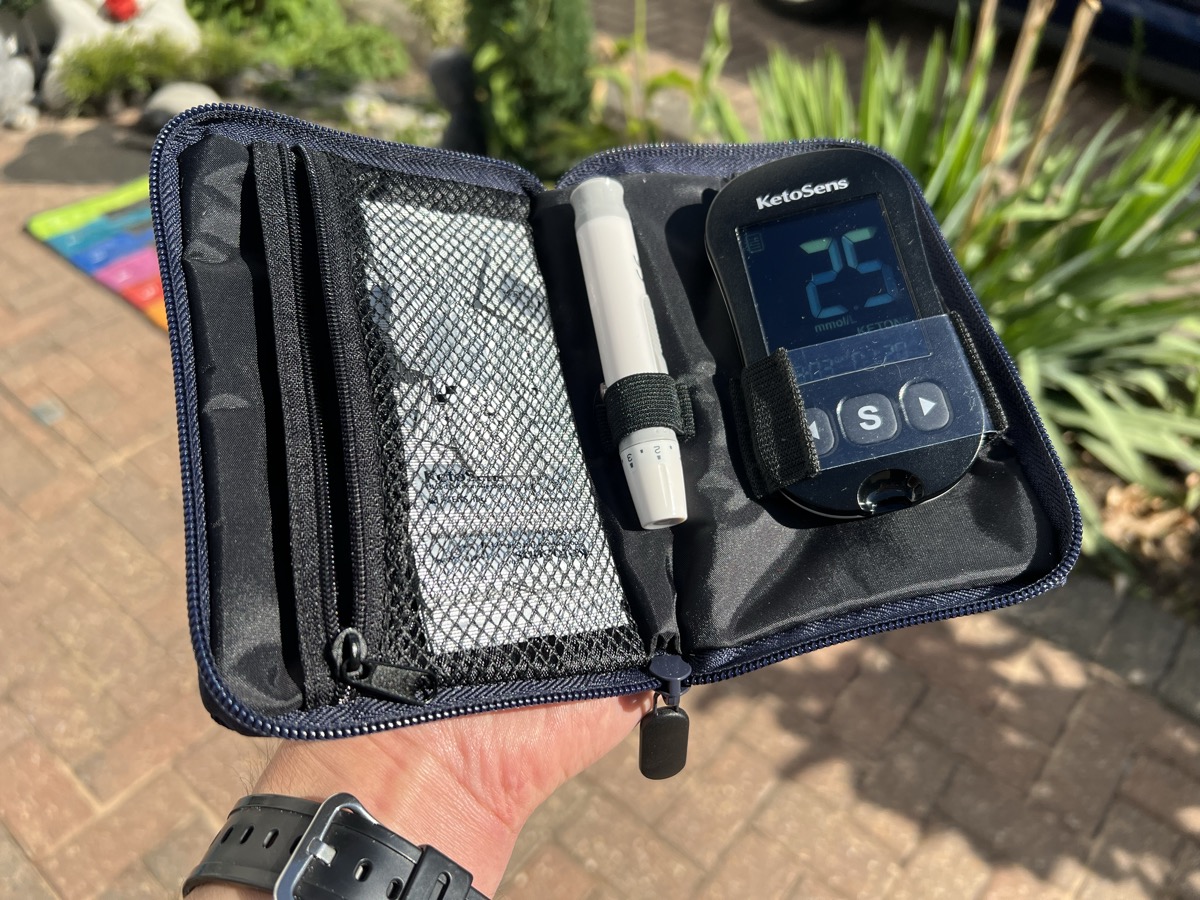I began my intermittent fasting (i.e. time restricted eating) journey just over 3 weeks ago and since the beginning, I’ve been measuring, tracking, monitoring both my glucose and ketone body levels. Collecting these data points require pricking my fingers with a lancet and feeding small blood samples into the monitoring devices.
Although the process of drawing blood is somewhat painful, annoying and sometimes inconvenient, these minor drawbacks are worth the trade off: developing a deeper understanding of my body. An additional downside of this routine blood sampling is that it can be somewhat cost prohibitive: each ketone test strip costs about $1.00 and because I collect about 8-12 blood samples per day, the total cost per week ranges anywhere between $50-75 dollars.
Nutritional Ketosis
With the test strips, I now know when my body enters nutritional ketosis, a metabolic state when one’s body produces an elevated amount of ketone bodies (i.e. acetoacetate, acetone, beta-hydroxybutyrate). Nutritional ketosis is an indicator of lypolysis — a process in which bodies burn fat for fuel, a desirable state when trying to lose weight.
So … how do you know your body is in nutritional ketosis?
Nutritional ketosis can be defined as 0.5 to 3.0 millimoles per liter (mmol/L) of beta-hydroxybutyrate being present in blood. So if the meter reports a value within that range, then you are burning fat!
A not-so-strict ketogenic diet
My body is still able to transition into nutritional ketosis despite not adhering to a strict ketogenic diet, which is defined a very low carbohydrate or low carbohydrate diet, consuming between 30-50g or consuming less than 150g per day, respectively. Instead of adding more constraints into my life, I’m (more or less) just restricting my eating window, following what is known as a 16:8 intermittent fast — 16 hours window of fasting, 8 hour of eating (also known as post-postprandial state).
Not following a strict ketogenic diet does lower the probability of entering nutritional ketosis. I had initially thought that right off the bat, my body would fairly quickly (maybe within three or four days) enter nutritional ketosis at the tail of my fasting window. But according to the data I’ve collected, I’ve discovered that normally, throughout the day, my ketone body levels hover anywhere between 0.1 and 0.4 mmol/L — below the nutritional ketosis range.
Four discrete instances of nutritional ketosis
- 0.5 mmol/L – Playing pickle ball early in the morning while in the fasted state
- 0.8 mmol/L – Playing tennis during while in the fasted state
- 0.9 mmol/L – Extending fast to about 30 hours
- 2.5 mmol/L – Extending fast to about 36 hours
